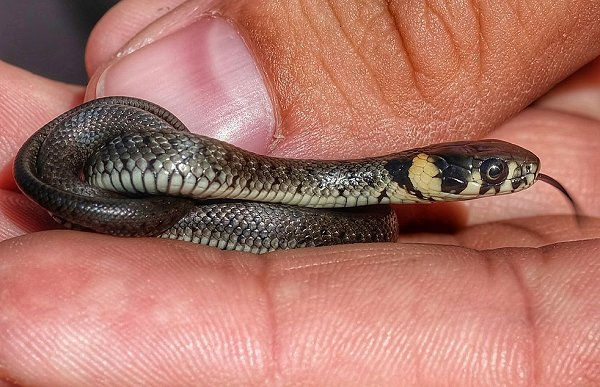Pheromones in Microbes, Plants & Animals
- Sylvia Rose

- Feb 18
- 4 min read
Updated: Apr 15
Pheromones are communication tools. Chemical substances released by an organism into the environment trigger responses to relay information about mating, territory, danger or food.

Pheromones act on different sensory levels, using specialized organs for detection and translation. In many animals, the vomeronasal organ interprets the signals.
The vomeronasal organ (VNO) is the peripheral sensory organ for the accessory olfactory system. In most amphibians, reptiles and mammals, paired organs are at base of the nasal septum or on the roof of mouth.
Salamanders engage in nose-tapping behavior to stimulate their VNO. A snakes uses this organ to detect prey by extending its tongues to collect scent, then touching the tongue to the organ's opening when retracting it.

Microorganisms
Pheromones in microorganisms are primarily used for mating and reproduction. For instance, Myxobacteria use pheromones to aggregate and form a fruiting body, where they reproduce.
Likewise, in sexual reproduction yeasts use pheromones to attract mates and initiate the mating process. Pheromones influence behaviors such as mating, biofilm formation and virulence.
An example is quorum sensing, a mechanism whereby bacteria secrete pheromones to gauge their population density. Once a specific concentration is detected, it triggers a collective response.

Quorum sensing lets some bacteria regulate pathogenicity. Pseudomonas aeruginosa releases pheromones to coordinate virulence factor expression, increasing its infection efficiency. The bacterium causes about 10% of all hospital-acquired infections.
Some bacteria exhibit social behavior like swarming, a collective movement enabled by pheromones. Species like Myxococcus xanthus move in unison to prey on other bacteria.
Yeast quorum sensing research focusses on Saccharomyces cerevisiae and Candida albicans. In S. cerevisiae, quorum sensing molecules (QSMs) are 2-phenylethanol, tyrosol, and tryptophol. In C. albicans, main QSMs are farnesol and tyrosol.

Plants
Plant pheromones attract pollinators, helping plants reproduce. Those emitted by female flowers of the titan arum plant guide the male giant silk moth to a mate. He senses this pheromone for up to 22.5 km (14 mi).
This isn't surprising as the flower of this plant, also called the corpse flower, can be over 3 meters (10-12 ft) tall and reeks. However it's selective about pollination. The matchmaking behavior ensures reproduction happens near the plant to produce more pollinators.
Plants often use pheromones defensively as they can't flee from danger. When under attack from herbivorous consumers, some release volatile organic compounds (VOCs) to attract predators of the herbivore.

When plants like jasmine face herbivore attacks, they release pheromones to attract predators of those pests. These scents can lure parasitoid wasps to caterpillars, helping reduce herbivore damage.
Such mechanisms reflect the sophisticated survival strategies of plants. They often communicate with other species for mutual benefit.
Plants can also communicate through chemical signals in their roots. When one plant suffers an attack, it can release pheromones into the soil, alerting nearby plants to prepare their defenses.

Animals
In animals, pheromones serve various purposes such as mating, alarm signaling, and social organization. One classic example is the queen bee's pheromone, which maintains the hierarchy within the hive, preventing worker bees from reproducing.
In mammalian species including humans, the major histocompatibility complex (MHC) odor can influence mate selection. Animals sniff out compatible mates based on their MHC pheromones.
One compelling aspect of pheromones in mammals is the phenomenon known as the "smell of fear." Humans can't smell fear as in a distinct odor, but the body releases certain chemicals when a person is afraid.

These pheromones can be detected by others. This can trigger emotional and social shifts in response and behavior such as comfort-giving or protection; or aggression, avoidance, predation and bullying.
Some animals can also smell or detect the threat of a predator. Known as an innate threat factor, this is 2,5-dihydro-2,4,5-trimethylthiazoline, a single molecule component of a predator odor. This can also be called a "sixth sense," or spider sense tingling in a certain action hero.

Social insects like ants and bees heavily depend on pheromones for communication. A queen bee, for instance, releases pheromones to regulate worker behavior, reproduction, and maintain colony harmony.
Foraging ants mark paths to food sources with trail pheromones, resulting in a rapid influx of sister ants. This collective foraging strategy allows ant colonies to maximize their search for food.
Termites use pheromones to guide each other to food sources and build complex nests.

READ: Lora Ley Adventures - Germanic Mythology Fiction Series
READ: Reiker For Hire - Victorian Detective Murder Mysteries


